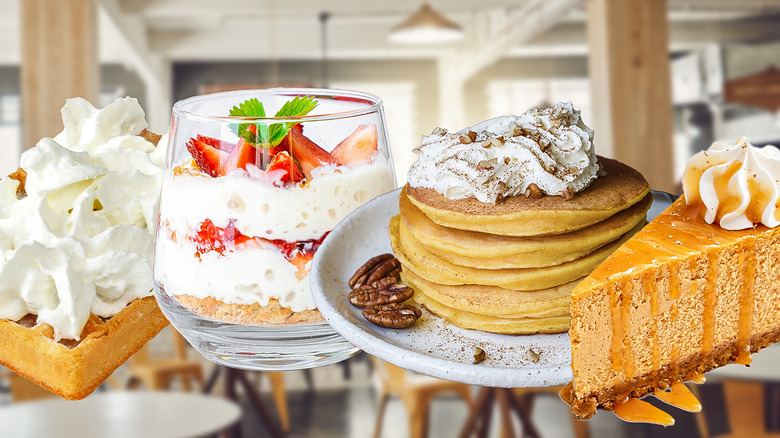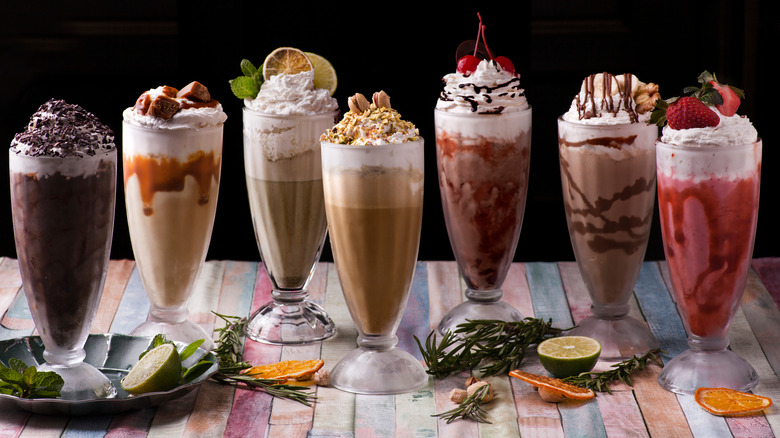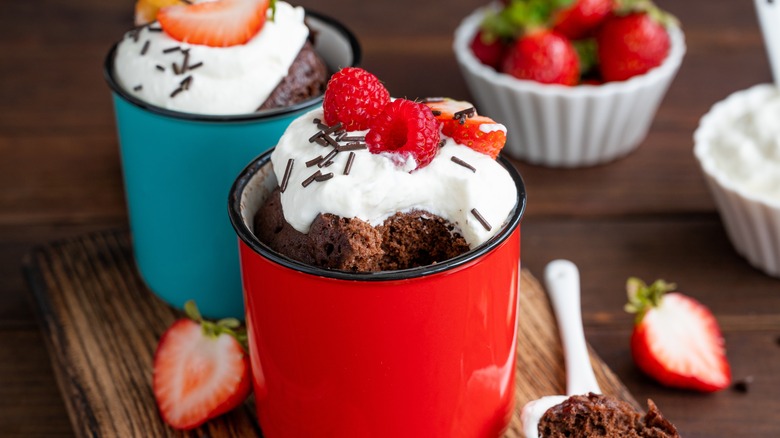Why Whipped Cream Is Such A Staple At American Restaurants
A frothy head of whip on your morning mocha is a given, but did you ever stop to think why restaurants top so many breakfast and dessert items with a mound of our favorite creamy indulgence? Why would an already rich dessert need an extra layer of whipped cream, if you think about it? The use of whipped cream in restaurants is not just a culinary choice, it's also about marketing and repeat sales.
Whipped cream's history is centuries old, evolving from a somewhat difficult product to make until the invention of the whisk, to our modern aerosol cans of the stuff. In 1948, the first canned whipped cream became available, making the airy dairy product an easy-to-add garnish and topping in restaurants and homes. Like a lemon wedge or sprig of parsley on savory dishes, whipped cream became a common plate garnish for the dessert menu, one that adds a dash of desirable decadence. But that dollop of whipped cream also delivers eye appeal that can increase sales, thanks to growing demand from consumers.
Whipping up interest on the menu
Whipped cream use in restaurants has been increasing, according to Restaurant Business, with chefs looking to add a special touch to their creations that makes them extra tempting and eye-catching. Consider McDonald's shakes: Before 2010, they were served in a flat-topped cup, no whip in sight. But with the rebranding of their McCafe items, shakes were upgraded to a cup with a domed plastic lid, adorned with a great cone of whipped cream and a cherry. Now three inches taller thanks to that topping, the shakes have a premium look and an increased price tag. You'll see the same trend in whipped toppings for coffees, frappes, and shakes in most restaurants for the same reasons.
Restaurants in the past relied on websites or menu photos to help sell their dishes, but today, social media posts give us a glimpse of how the plates are actually served. A soft pillow of whipped cream on a dessert plate enhanced with a cookie, cookie crumbles or candy bits is easy to execute reliably, and influencers get an appealing photo to post online. This type of win-win guarantees whipped cream's position as a garnish of choice.
View from the kitchen
Whipped cream adds value, but that's not the only reason chefs reach for the whisk and cream when planning menus. Flavor, texture, and color are all considerations as well. The contrast of unflavored whipped cream with a highly sweetened or flavored dessert such as cheesecake or mousse balances the flavors of the overall plate. Berries are a classic pairing with whipped cream for the same reason, with the natural sweetness of dairy meeting the acidity of the fruit.
We love the creamy mouthfeel of whip on a hot or cold drink, too. Airy cream helps make the flavors of dark coffee and chocolate shine, and the butterfat from the cream adds richness. Chefs are even using whipped cream on savory dishes, too, topping foods like chowders and poached fish. With so many sweet and savory uses already on the menu, we know that restaurants will continue to find innovative ways to bring us the creamy, delicious topping we all love.


